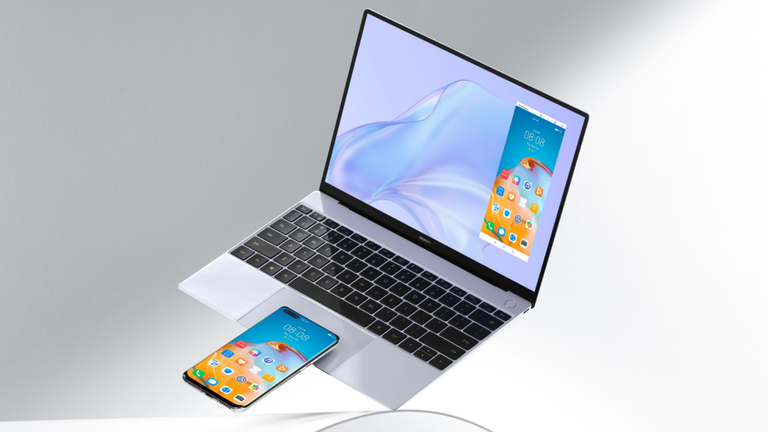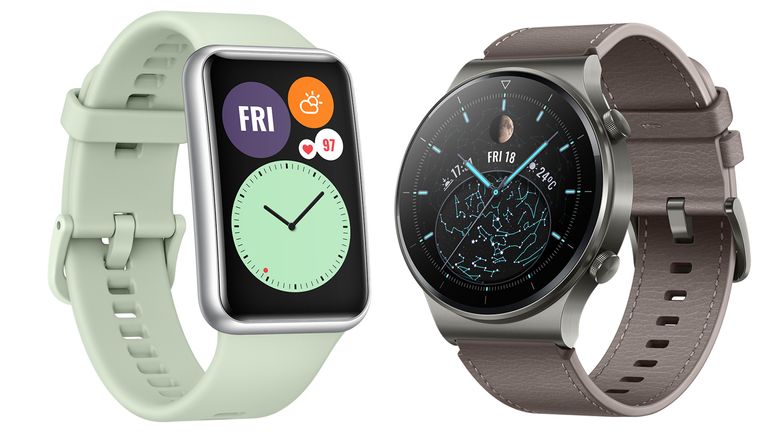Huawei has announced six new products – two laptops, two watches, and two earbud devices – although questions about its ability to continue to source US computer chips loomed over the launch.
American restrictions on Huawei, stated to be based on security grounds, will prohibit US technology companies from providing components such as computer chips to the company, which are used across its product lines.
Despite the potential impact of this, which is leading to redundancies in the company’s enterprise business in the UK, Huawei is launching a range of consumer products – and is introducing a new mobile operating system too amid the threats its phones would be banned from licensing Google’s Android.
Among the products announced at the company’s developers’ conference on Thursday are two new laptops, the MateBook X and the MateBook 14.
The MateBook X is thinner and lighter than Apple’s MacBook Air, weighing just 1kg thanks to a magnesium aluminium alloy, while the portable MateBook 14 weighs just under 1.5kg.
Both laptops come with the company’s new Huawei Share multi-screen technology, allowing Huawei phones to be peered with the laptops just by tapping them on the touchpad.
The touchpad for the MateBook X is an improvement on the last generation too, with a larger surface area and eight piezoelectric plates beneath it increasing sensitivity and offering haptic feedback from all four corners.
The MateBook X has a 13″ screen with a 3000×2000 display at 278 pixels per inch, and functions as a touchscreen – while the MateBook 14 has a 14″ display with a 2160×1440 resolution at 185 ppi.
Where the MateBook 14 really offers something different is in the processors powering it, having a top-shelf option of an AMD Ryzen 4800H CPU with 16GB of RAM.
Huawei is also introducing four new wearables, including the next generation Huawei Watch GT 2 Pro which comes in two versions mainly differentiated by bands, a professional-looking leather version and a sports version with a rubber strap.
The Huawei Watch GT 2 Pro supports performance tracking and measuring for more than 100 sports, including golf driving and skiing, which is potentially indicative of the market the company is aiming at.
The smartwatch can also be charged wirelessly from a Huawei smartphone, which will effectively donate its own battery life to the watch using reverse charging.
Also available is the Huawei Watch Fit, a cheaper smartwatch with a display a bit more similar to the Apple Watch’s, which comes with 96 workout modes and has generally a few features less than the flagship GT 2 Pro.
The two near earphones are Huawei’s wireless FreeBuds Pro and FreeLace Pro, the latter of which connects wirelessly to its users’ smartphones but comes with a lace strap to catch the buds if they fall out of the ear.
Both have active noise cancellation embedded, and the FreeBuds Pro come with a more cubic stem than rivals, which allows for a few more touch gestures to control the volume as well as pausing or playing a song, and skipping a track if desired.
Huawei did not make any reference to US sanctions in the launch, despite the threat that Microsoft may be prohibited from licensing any software to the company in the future.
This potentially means Huawei itself will have to replicate and update any security issues discovered in Windows 10 – just as it may have to do for its phones which run on Google’s Android OS – if those companies are permanently banned from licensing software to it.
The company is set to release a new operating system called HarmonyOS which can function across its laptop and mobile devices, which could replace Windows and Android in the case of a ban – ultimately reducing revenue for the US technology companies.


